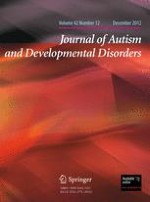01-12-2012 | Original Paper
Microglia in the Cerebral Cortex in Autism
Gepubliceerd in: Journal of Autism and Developmental Disorders | Uitgave 12/2012
Log in om toegang te krijgenAbstract
We immunocytochemically identified microglia in fronto-insular (FI) and visual cortex (VC) in autopsy brains of well-phenotyped subjects with autism and matched controls, and stereologically quantified the microglial densities. Densities were determined blind to phenotype using an optical fractionator probe. In FI, individuals with autism had significantly more microglia compared to controls (p = 0.02). One such subject had a microglial density in FI within the control range and was also an outlier behaviorally with respect to other subjects with autism. In VC, microglial densities were also significantly greater in individuals with autism versus controls (p = 0.0002). Since we observed increased densities of microglia in two functionally and anatomically disparate cortical areas, we suggest that these immune cells are probably denser throughout cerebral cortex in brains of people with autism.
